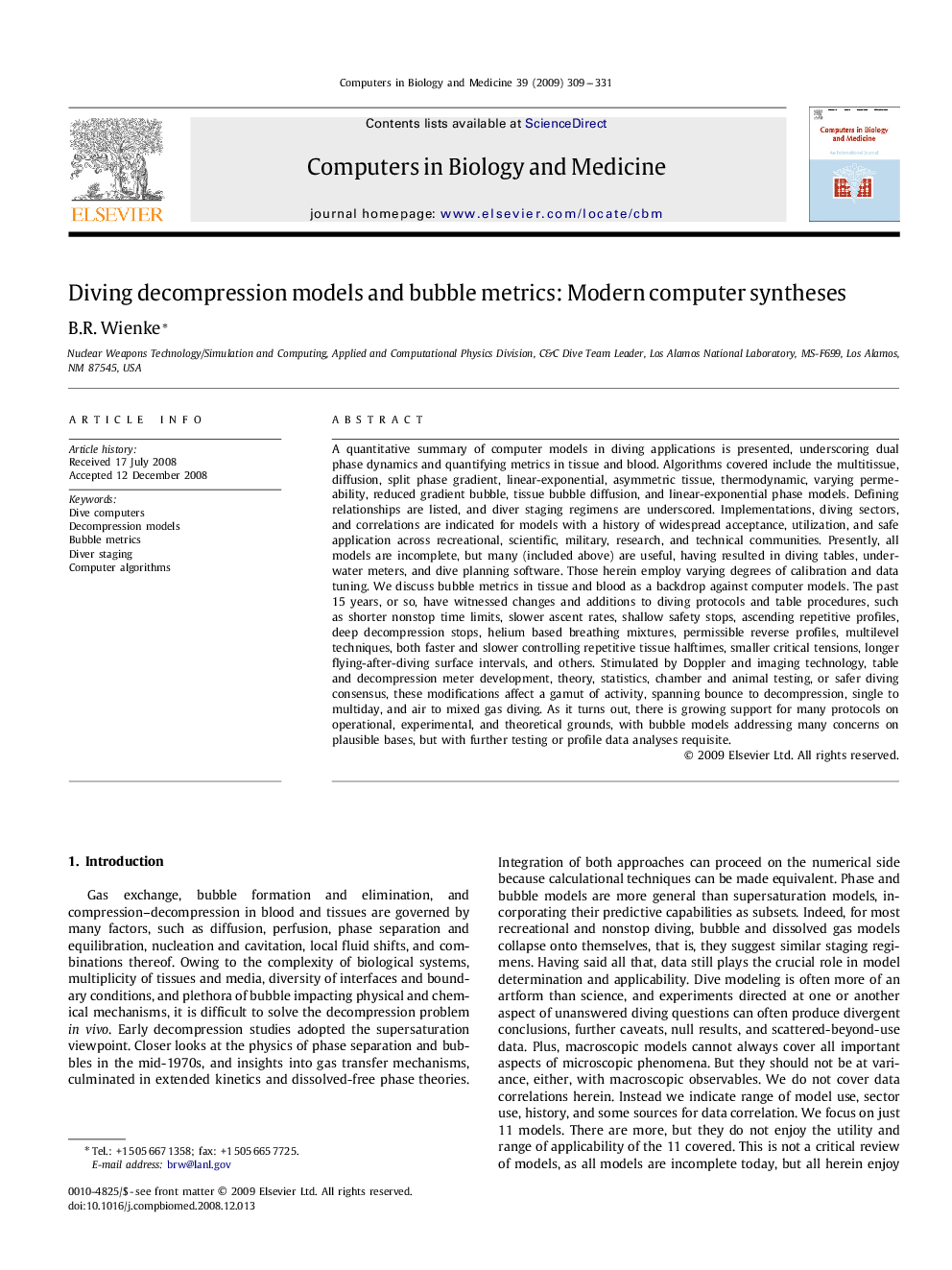| Article ID | Journal | Published Year | Pages | File Type |
|---|---|---|---|---|
| 505657 | Computers in Biology and Medicine | 2009 | 23 Pages |
A quantitative summary of computer models in diving applications is presented, underscoring dual phase dynamics and quantifying metrics in tissue and blood. Algorithms covered include the multitissue, diffusion, split phase gradient, linear-exponential, asymmetric tissue, thermodynamic, varying permeability, reduced gradient bubble, tissue bubble diffusion, and linear-exponential phase models. Defining relationships are listed, and diver staging regimens are underscored. Implementations, diving sectors, and correlations are indicated for models with a history of widespread acceptance, utilization, and safe application across recreational, scientific, military, research, and technical communities. Presently, all models are incomplete, but many (included above) are useful, having resulted in diving tables, underwater meters, and dive planning software. Those herein employ varying degrees of calibration and data tuning. We discuss bubble metrics in tissue and blood as a backdrop against computer models. The past 15 years, or so, have witnessed changes and additions to diving protocols and table procedures, such as shorter nonstop time limits, slower ascent rates, shallow safety stops, ascending repetitive profiles, deep decompression stops, helium based breathing mixtures, permissible reverse profiles, multilevel techniques, both faster and slower controlling repetitive tissue halftimes, smaller critical tensions, longer flying-after-diving surface intervals, and others. Stimulated by Doppler and imaging technology, table and decompression meter development, theory, statistics, chamber and animal testing, or safer diving consensus, these modifications affect a gamut of activity, spanning bounce to decompression, single to multiday, and air to mixed gas diving. As it turns out, there is growing support for many protocols on operational, experimental, and theoretical grounds, with bubble models addressing many concerns on plausible bases, but with further testing or profile data analyses requisite.
